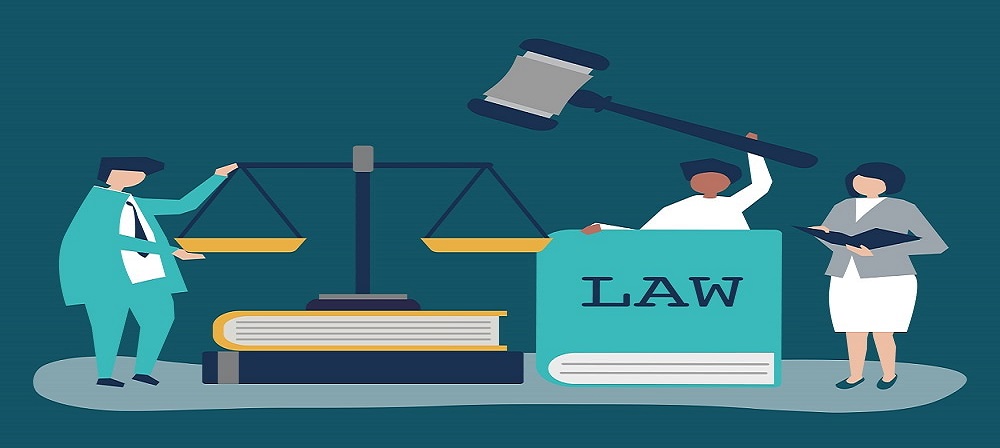Understanding the Doctrine of Ultra Vires in Business Law

Introduction
In the complex world of corporate law and governance, the Doctrine of Ultra Vires holds a significant place. A Company is incorporated to do business activities for which it is formed. But there may be many activities which are ultra vires or outside the scope of a company’s working. This article is an attempt to shed light on such concept know as Doctrine of Ultra Vires.
Meaning of Ultra Vires in Company Law
Digging into the complicated domain of corporate law, the term “Ultra Vires” emerges as a crucial concept that profoundly influences the limits of a company’s actions.
Taken from Latin term, where “ultra” means beyond, and “vires” signifies power or authority, Ultra Vires summarizes actions that surpass a company’s designated authority. Any undertaking conflicting with or exceeding the scope defined by the Companies Act, Memorandum of Association, or Articles of Association falls under the umbrella of ultra vires acts.
In contrast, actions executed under proper authority fall within the realm of intra vires, denoting activities within the legal powers. Intra vires actions are equivalently labelled as “valid,” while those falling under ultra vires are deemed “invalid.”
An intriguing aspect of Ultra Vires is its irrevocability; even the shareholders’ consent cannot ratify an ultra vires transaction. Recognizing the significance of Ultra Vires is paramount for corporate entities, as any venture breaching specified powers may face classification as invalid and unenforceable. This principle operates as a safeguard, ensuring companies navigate within the prescribed legal framework and adhere to the limits stipulated in their constitutional documents.
Engaging in Ultra Vires activities may trigger legal repercussions. Contracts executed beyond a company’s designated powers risk being declared void or voidable. Shareholders and regulatory bodies retain the right to challenge such actions, pursuing remedies to rectify the breach.
To fortify against Ultra Vires offenses, companies must intricately describe their powers and objectives within their memorandum and articles of association. Regular scrutiny of these documents proves vital to ensure alignment with the company’s evolving business strategies.
In essence, comprehending and navigating the nuances of Ultra Vires in the dynamic landscape of corporate law is not only a legal imperative but also a strategic necessity for businesses aiming to thrive while maintaining regulatory compliance.
Doctrine of Ultra Vires Meaning
Originating from English common law, the Doctrine of Ultra Vires has woven its historical threads through the fabric of corporate governance since the 19th century. It stands as a formidable pillar, dictating the boundaries within which corporate actions must unfold.
At its core, the doctrine of ultra vires operates on the premise that a company holds the power to exercise only those acts that are clearly mentioned in its Memorandum of Association and Articles of Association. Any action surpassing these acts falls under the label of “ultra vires,” rendering it void and unenforceable. The consequence of such ultra vires acts mean that any contract or act conducted beyond the powers vested in the directors and the company is not merely void but entirely inoperative, i.e. lacking binding force on the company.
The doctrine of ultra vires denies the company the right to sue or be sued on an ultra vires transaction. In instances where goods are supplied, services offered, or loans extended through an ultra vires contract, the company cannot secure payment or recover the loan. However, a lender retains the right to prevent the company from parting with the money through an injunction, maintaining ownership of the funds since they remain ultra vires to the company.
Additionally, if a company borrows money through an ultra vires transaction to settle a legal loan, the lender retains the entitlement to recover the loan from the company.
Navigating this legal terrain, shareholders hold the power to regularize certain ultra vires acts. For example, if an act exceeds the authority of the directors or breaches the articles of the company, shareholders can validate such acts through a special resolution or by altering the Articles of Association, respectively.
Historically, the Doctrine of Ultra Vires evolved to shield shareholders and stakeholders from potential corporate power misuse. However, contemporary corporate law has experienced a transformation, with numerous jurisdictions adopting more lenient statutes, granting companies expanded powers.
Key Elements of the Doctrine of Ultra Vires
To fully comprehend the Doctrine of Ultra Vires, it’s essential to understand its key elements. Following are the key element of Doctrine of Ultra Vires
Corporate Charter: Every corporation is formed with a charter or articles of incorporation. This document outlines the corporation’s purpose, powers, and limitations. Actions taken by the corporation must align with the provisions of this charter.
Ultra Vires Acts: An ultra vires act refers to any action or transaction undertaken by the corporation that falls outside the scope of its charter. This includes activities such as entering into contracts unrelated to its business purpose or making investments in unauthorized ventures.
Void or Unenforceable: When a corporation engages in an ultra vires act, the legal consequences can vary. In many jurisdictions, such actions are considered void or unenforceable. This means that the corporation and the other party to the transaction may not have legal recourse to enforce the terms of the agreement.
Type of Ultra Vires Activities under Companies Act
Ultra vires activities can be divided into the following three divisions:
- Ultra Vires The Companies Act: According to Section 6 of the Companies Act of 2013, no matter what provisions to the contrary to it are found in a company’s memorandum or articles, any agreements company has signed, any resolutions passed by it in its general meeting or board meetings, before or after the commencement of this Act, the provisions of the Companies Act of 2013 shall govern. Any action that violates or exceeds the Companies Act’s is in violation of the law. Such an act is invalid, and it cannot even be approved by all the shareholders of the company.
- Ultra Vires the Memorandum of Association: The Memorandum of Association (MOA) is a document that outlines a company’s bylaws, serves as the cornerstone upon which the organization’s structure is erected. It includes provisions outlining the limitations of the business’s operations and its interactions with other parties. The objects of a company are stated in its memorandum of association, which also limits the business’s authority.
A company cannot to do any actions that fall outside the scope of its object clause. Any action that violates the object clause of the memorandum of association will be considered ultra vires. The doctrine of ultra vires states that in the case of a company, anything that is not specified in the memorandum of association as its objects is forbidden. An act that is ultra vires is therefore null and void and will not bind the company. Neither the contracting party nor the company party can sue on it. An ultra vires act is invalid and it cannot even be approved by a unanimous vote of all shareholders.
- Ultra Vires the Articles of Association: The bylaws and rules for the management of a company’s internal affairs are included in the Articles of Association (AOA) of the company. Articles of Association is essential for running a business and outlines the rights of its individual members. If a Company acts in a way that is ultra vires the Articles of Association but within the scope of the Memorandum of Association, then these acts are also void. But the company’s shareholders in a general meeting may have the authority to amend the Articles by special resolution and approve such acts.
Effects of ultra vires Transactions
Various transactions or activities that are considered ultra vires are given below:
- Void ab initio: Acts that are Ultra vires are null and void ab initio. These acts do not bind the company. Company cannot sue or be sued upon such transaction. Contracts that are considered ultra vires are void from the start and cannot be converted to intra vires through estoppel or ratification.
- Injunction: If a Company has committed or is about to commit an ultra vires act, the members may get an injunction to prevent it.
- Personal liability of Directors: It is the responsibility of the directors of the company to make sure that corporate money is only used for the company’s lawful business. If this capital is used for purposes that are against the company’s memorandum, the directors will be personally responsible for it. In case of deliberate misapplication, criminal action can also be taken for fraud.
- Acquisition of Property: Where a company’s funds have been used ultra vires to acquire certain property then the right of the said company to such property is held secure and the company will be the proper party to protect the property. This is because even if the property is bought for an ultra vires object, it still symbolizes the company’s financial investment.
- Ultra vires borrowing: An Ultra vires borrowing does not create relationship of creditor and debtor.
- Ultra vires torts: A tort is a wrongful act or an infringement of a right (other than under contract) leading to legal liability. Company is not liable for a tort committed outside its objects.
- Ultra vires grants and guarantees: Directors are not permitted to make unauthorized grants and guarantees unless they are necessary to further the company’s goals or are incidental to those goals.
Exceptions to the doctrine of ultra vires under Companies Act
The exceptions to the doctrine of ultra vires are given below:
- An intra vires act which is performed irregularly by the company can be regularized by the consent of the shareholders through a resolution in the general meeting of the company.
- An act which is not stated in the Memorandum of Association of the company shall not be considered ultra vires, if such act is within the authority of the Companies Act, 2013.
- Unless the Companies Act, 2013 expressly prohibits such act, any incidental or consequential effect of the ultra vires act will not be void.
- An act which is outside the authority of the directors of the company but otherwise is an intra vires the company can be ratified by the shareholders of the Company.
Rationale Behind the Doctrine of Ultra Vires
The Doctrine of Ultra Vires serves several essential purposes:
- Protection of Shareholders: By limiting a corporation’s activities to those within the scope of its charter, shareholders are protected from unauthorized actions that could harm their interests.
- Clarity and Transparency: The doctrine promotes transparency by ensuring that a corporation’s actions align with its stated objectives. This clarity is crucial for investors, creditors, and other stakeholders.
- Legal Certainty: It provides legal certainty by establishing clear boundaries for corporate activities. This helps prevent abuse of power by corporate officers and directors.
Conclusion
In conclusion, the Doctrine of Ultra Vires remains a fundamental concept in corporate law, albeit with a more flexible application in modern times. Understanding the historical roots, key elements, and the rationale behind this doctrine is essential for anyone involved in corporate governance, legal matters, or business transactions. The principles of transparency, accountability, and alignment with a corporation’s charter continue to be central in corporate law.
Follow Us
Keep Yourself Updated By Following Us




